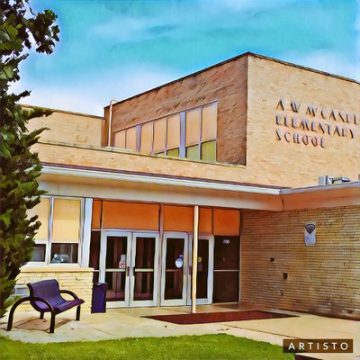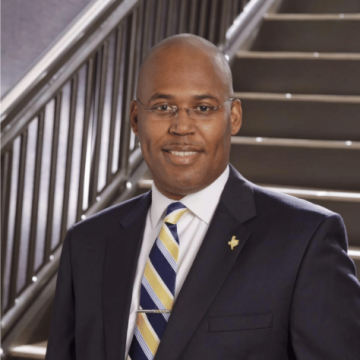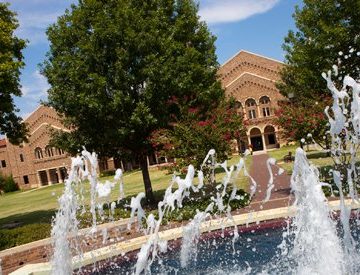To transform a school into a learning community, a savvy education leader needs to support the very best teachers.
Martin Haberman
Distinguished Professor
School of Education
University of Wisconsin Milwaukee
Successful schools share a number of attributes—good leadership, a common vision that makes a climate of learning the highest priority, teachers who use best practices, an effective accountability system, and parent involvement. An attribute less frequently discussed is the manner in which teachers and staff pursue their professional development. Would making the school a learning community—one that encourages teachers and staff to grow personally and professionally—benefit the students? Would a school with great teachers be more likely to become a learning community?
The well-known quip attributed to Will Rogers, usually quoted incompletely as “You can’t teach what you don’t know,” is often applied to teachers who teach content in which they are less than expert. The entire aphorism, however, conveys a significantly different meaning: “You can’t teach what you don’t know about places you ain’t never been.” The full message refers to experiential knowledge rather than content knowledge.
The pursuit of learning is not a piece of content that can be taught. It is a value that teachers model. Only teachers who are avid, internally motivated learners can truly teach their students the joy of learning. The frequently espoused goal of lifelong learning for our students is hollow rhetoric unless the school is also a learning community in which teachers demonstrate engagement in meaningful learning activities. Teachers who are not “turned on” to learning themselves are trying to teach about “places they ain’t never been.”
A group is a learning community when members share a common vision that learning is the primary purpose for their association and the ultimate value to preserve in their workplace and that learning outcomes are the primary criteria for evaluating the success of their work. In a school learning community, teachers pursue two realms of knowledge: professional development and learning for the sake of learning. The importance of the former is self-evident. As for the latter, inculcating love of learning is the surest way of teaching students to become turned-on learners. Students will model behavior of teachers they respect—teachers who have strong interests, who love to learn, and who are always reading something of interest.
Attributes of a Learning Community
During the first four years of my career as a university faculty member, I had the special privilege of participating in a community of learners. The following attributes of that learning community have applications in both primary and secondary school environments:
- Modeling. In guiding student learning and development, teachers applied the same principles that guided their own learning and development.
- Continual sharing of ideas. Teachers shared ideas daily regarding vital issues of equity, instruction, curriculum, testing, school organization, and the value of specific kinds of knowledge.
- Collaboration. Teachers became involved in team teaching and other collaborative efforts in program development, writing, and research.
- Egalitarianism. Teachers dispensed with formalities. Anyone who took an interest could vote in a department meeting, especially students. The quality of ideas was more important than their source.
- High productivity. Teachers continually increased their workloads. No matter how high the output, they continually pressured themselves to create new programs, develop new courses, publish books and articles, and produce more research.
- Community. Faculty members valued community more than promotion. Finding a more stimulating learning community became the criterion that guided the movement of faculty to various institutions.
- Practical applications. Teachers asked themselves, “How does what we are doing help students, teachers, and schools? What did we do this week to help?”
Assuming that these seven attributes adequately describe a learning community, how can we develop such a community? And what role would star teachers play in transforming schools into learning communities?
Attributes of Star Teachers
The term star teachers designates teachers who are so effective that the adverse conditions of working in failing schools or school districts do not prevent them from being successful teachers. They make up approximately 8 percent of the teachers who work with seven million diverse low-income students in the United States. Several characteristics set them apart (Haberman, 1995/2004): their persistence, their physical and emotional stamina, their caring relationships with students, their commitment to acknowledging and appreciating student effort,their willingness to admit mistakes, their focus on deep learning, their commitment to inclusion, and their organization skills. They also protect student learning, translate theory and research into practice, cope with the bureaucracy, create student ownership, engage parents and caregivers as partners in student learning, and support accountability for at-risk students. These attributes predict the effectiveness and staying power of teachers serving diverse students in low-income urban schools. More than 170 urban school districts in the United States now use the Star Teacher Interview, which evaluates these attributes, as part of their teacher hiring process (Haberman, 2004).
Star Teacher Ideology
Undergirding these attributes is the common ideology of star teachers.
- Stars tend to be nonjudgmental. As they interact with students and adults in school settings, star teachers try to understand the motivation behind a given behavior rather than judge the behavior.
- Stars are not moralistic. Star teachers know that preaching and lecturing do not equate to teaching and that those approaches neither influence behavior nor increase students’ desire to learn.
- Stars respond as professionals and are not easily shocked. Horrific events occur in urban schools with some regularity. Star teachers ask themselves, “What can I do aboutthis?” If they can help, they take action. If not, they get on with their work and their lives. They respond to emotionally charged situations as thoughtful professionals.
- Stars hear what students and adults say to them. Star teachers listen and understand. They have exceedingly sensitive communication skills. They regard everyone in the school community as a potential source of useful information.
- Stars recognize and compensate for their weaknesses. Star teachers are aware of their weaknesses in terms of a lack of knowledge or skills or in terms of their own biases and prejudices. They strive to overcome them.
- Stars do not see themselves as saviors. Star teachers have not come to rescue the system. Actually, they do not expect much from the system—except for the likelihood that it may worsen. They focus on making their students successful in spite of the system.
- Stars do not work in isolation. Star teachers know that burnout can affect everyone. They network and create their own support groups.
- Stars view themselves as successful professionals rescuing students. Star teachers see themselves as “winning” even though they know that their total influence on their students is likely to be less than that of the society, neighborhood, or even gang. They take pride in turning students on to learning and making them educationally successful in the midst of failed urban school systems.
- Stars derive energy and well-being from their interactions with students. Star teachers so enjoy being with students that they are even willing to put up with the irrational demands of the system. Rather than always feeling exhausted, they often feel vitalized and energized from a day at work.
- Stars see themselves as teachers of children as well as of content. Star teachers want to encourage their students to become better people, not just higher achievers.
- Stars are learners. Star teachers are models of learning for students because they are vitally interested in some subject matter or avocation that keeps them continually learning.
- Stars have no need for power. Star teachers derive their satisfaction from effectively teaching diverse low-income students.
- Stars recognize the imperative of student success. Star teachers see the need for diverse low-income students to succeed in school as a matter of life and death for the students and for the survival of society.
Teacher Voice
Star teachers are avid learners. The challenge is getting them to actively participate in a schoolwide learning community. Their motivation for becoming teachers generally has little to do with serving as change agents or transforming schools. Stars will not necessarily assume leadership roles in this regard because they focus on their students. Although they seek to get along with colleagues, work positively as team members, and share their expertise when asked, they prefer to put their time to use working with individual students, gathering interesting learning materials, making home visits, and pursuing the particular interests and avocations they value. They will need to be convinced that their participation in schoolwide activities will directly benefit their students.
What will not convince them to participate are learning communities that they perceive have been created with an agenda, such as one that tries to convince teachers that they need the “Bumstead” reading program or the “Surefire Method” of instruction. If administrators have teachers meet to learn primarily about the mandates that the teachers need to follow, then the creation of a learning community will be stillborn.
A learning community is based on the assumption that developing the faculty is a necessary condition of school improvement. If the district or building administration operates on the assumption that teacher-proof programs can improve schools, then star teachers will detach themselves from the process. Star teachers need to be convinced that the faculty will have the major voice in determining its own professional development. This is a step-by-step trust-building process involving teachers and their school administrators. The school administration must also show genuine willingness to live with and support the results of the freedom that teachers must exercise to create a school-based learning community.
When Stars Steal the Show
Stars care about and respect students—even students whom other teachers cannot handle and do not want in their classrooms. For example, stars do not suspend students unless the law requires them to do so (for example, when a student brings a gun to school). At schools that suspend more than half of their students during the course of the school year, the positive relationships between stars and their students become obvious.
Stars do not follow mandates if they believe that the mandates will hurt student learning. Stars do not follow curriculums page by page because their expertise in the subjects they teach gives them the confidence to know what to skip. Stars do not “cover” material but rather focus their teaching on generating interest and relevance.
These teacher behaviors do not go unnoticed by other teachers and administrators. Individual teachers or teacher committees often come to principals demanding to know, “If we have to do this, why doesn’t he or she [the star teacher] have to?” In middle and high schools, where each student has many teachers, a star’s success with students whom other teachers are failing can become a source of faculty dissension. Other teachers often have a difficult time accepting that stars are successful and happy about their work when they themselves may be experiencing great stress and discouragement. Indeed, teachers often feel pressured by the presence of stars. The star’s success makes other teachers’ failures all the more obvious. The failure may beone of inadequate professional know-how, a lack of teacher effort, or the teachers’ inability to establish positive working relationships with students.
Using star teachers in ways that help the school can be a challenge for principals. In many schools, the principal may be reluctant to provide stars with “space” because their success couldreveal the principal’s inadequacy at providing professional development activities that will bring the rest of the staff up to the stars’ level. The principal must also deal with parents who want their children in star teachers’ classrooms and with grievances from teachers who are concernedthat stars may not be following school regulations, such as requiring silence in the lunchroom or suspending students for first-time infractions. Unfortunately, it is easier to pander to the majority than to protect the best practices of the stars. Principals sometimes even feel pressured to drive stars out, typically by assigning them to teach subjects for which they are unprepared.
The challenge to the principal, or to those seeking to create a learning community, is to use star teachers in unobtrusive, supportive ways that do not threaten the rest of the faculty and continuously remind them of their inadequacies. School administrators could use star teachers as committee members but without singling them out or designating them as chairpersons or faculty leaders. Administrators should let star teachers remain in their classrooms rather than removing them to become mentors or coaches. Star teachers should also work on the same agreed-on activities that the other teachers work on. And administrators should never request teachers to observe star teachers’ classrooms unless the teachers themselves request it. Stars can have a positive impact if other teachers see that the stars are not seeking promotions out of their classrooms and are not trying to control the behavior of their peers.
School leaders must also recognize that the battle is for the hearts and minds of the teachers in the middle. This is the group that leaders must reach for the school to truly become a learning community. These are the satisfactory teachers who represent approximately 40 percent of the faculty. This middle group is as susceptible to becoming discouraged and accepting failure as they are to emulating the more positive approach of the stars.
A Portrait of Success
What if all teachers in a school were star teachers? What impact would it have on student achievement? Two failing elementary schools whose faculties were to be reconstituted provided us with the answer. One school serves low-income students of Mexican descent in Texas; the other serves predominantly low-income African American students in a depressed urban area in New York State. Using the Star Teacher Selection Interview to identify star ideology and attributes, we hired only those teachers who passed the interview. We scored candidate responses in terms of how closely they mirrored the star teacher approach. Only a small percentage passed at the star level. The principals for these reconstituted schools also needed to pass the Star Administrator Selection Interview.
These schools, which had been designated as failing, were moved out of that category within a year. The school in Texas actually became one of the highest-achieving schools in the district within this short period. Highly effective teachers, led by an effective principal, can clearly close the achievement gap.
In an in-depth study of the two schools, I identified more than 30 factors that contributed directly or indirectly to creating a learning community. For example, all the teachers focused on effort rather than ability as their explanation for school success. The teachers saw effective instruction as a matter of life and death for students. Moreover, the teachers expected to have problems as part of their daily work. They viewed working with English language-limited students and inclusion students as an integral, not an extra, part of their jobs. And they accepted accountability for student achievement.
The learning communities that developed in these two schools were not based on teachers necessarily liking one another, or even agreeing with one another’s philosophies and methods. Teachers did mutually respect one another, however, because they firmly believed that they all put the learning of the students above the convenience of the adults. Teachers did not blame the students for not learning, nor did they define their jobs in terms of the legally required minimums. Rather, teachers defined their roles in terms of “whatever it takes” to solve the problems. Selecting both veteran teachers and beginners with star ideology created a climate that provided continual opportunities for teachers to pursue their own learning and model their commitment to learning for their students (Haberman, 1999).
At the start of the school year, the teachers trusted my contention that if they pursued these practices rather than teach for the tests, test scores would take care of themselves. And the test scores did just that. The faculty came to regard the achievement tests as minimum, not maximum, levels of what their students could achieve.
Looking to the Future
On the basis of what I have observed in approximately 200 failing school districts during the last 50 years, I can make a number of predictions. First, working conditions in schools will most likely worsen rather than improve. Second, the next generation of principals will spring from thesame internal pools as the current generation and will most likely not experience greater success. Last, transformers seeking to change the culture of schools using teacher-proof methods and programs will not create learning communities.
There are effective schools in every failing district that have, against all odds, created a learningcommunity that functions to some degree. Moreover, a great opportunity exists to create viable learning communities in schools that must be reconstituted by law or reconstituted as charter schools within the same public school district.
It makes little sense to work harder and longer at replicating strategies for changing school culture that have consistently failed in the past. What is worthy of replication is building the culture of a school that will foster and maintain a learning community, with teachers whose ideology continually moves them down the road toward becoming stars.
References
Haberman, M. (1995/2004). Star teachers of children in poverty. Houston, TX: Haberman Educational Foundation.
Haberman, M. (1999). Victory at Buffalo Creek: What makes a school serving Hispanic children in poverty successful? Instructional Leader, 17(2).
Haberman, M. (2004). Creating effective schools in failed urban districts. Myriad. University of Wisconsin-Milwaukee.






